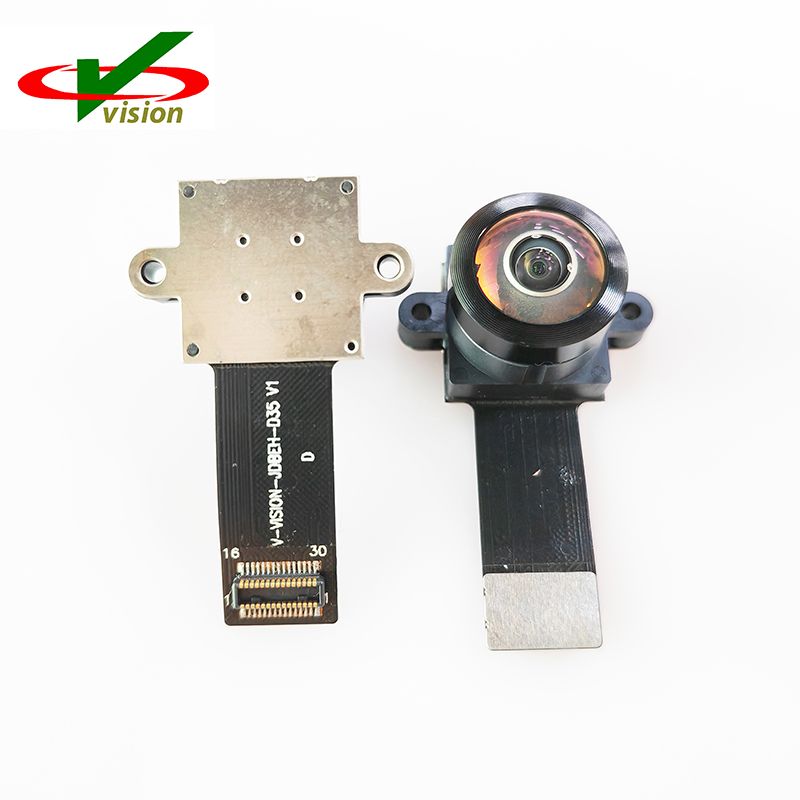Why Is the 1 Megapixel Camera Module Still Relevant in Today's High-Resolution World?
2025-02-26
In the ever-evolving world of technology, where high-definition and ultra-high-definition resolutions dominate, it may come as a surprise that the 1 megapixel (MP) camera module still holds a place in various applications. With the advent of smartphones offering cameras with resolutions surpassing 100 MP, why does the 1 MP camera module continue to be an important tool in certain sectors? Is it simply a matter of cost, or is there something more significant about its functionality? Let's dive into the reasons why the 1MP camera module is still relevant and widely used despite the high-resolution camera trend.
What Exactly Is a 1 Megapixel Camera Module?
A 1 MP camera module is a compact electronic device that captures images with a resolution of 1 million pixels, meaning it can produce pictures with a resolution of around 1280x720 pixels (HD). These modules are often used in various types of technology, including surveillance cameras, security systems, embedded systems, industrial automation, and even some consumer devices.
While 1 MP might sound low compared to the cutting-edge cameras in modern smartphones, this relatively modest resolution is still enough for certain tasks that don’t require highly detailed or high-definition imagery. So why do industries still rely on these simpler systems?
Why Do 1 Megapixel Camera Modules Remain Popular?
1. Cost-Effectiveness
One of the primary reasons 1 MP camera modules continue to be used is their affordability. Compared to higher resolution camera modules, which tend to be more expensive due to advanced image sensors, larger storage requirements, and processing power, the 1 MP module is much more cost-effective. This makes them an ideal solution for applications that do not require extreme image clarity but still benefit from basic visual data.
For industries that need to deploy large quantities of cameras, such as security systems or embedded systems, using 1 MP modules significantly reduces the overall cost. The money saved can be invested in other areas, such as additional functionality or integration into existing systems.
2. Low Bandwidth Requirements
Another key advantage of 1 MP camera modules is their minimal bandwidth requirement. Higher resolution cameras, especially those with multiple megapixels, often demand substantial bandwidth for streaming or recording high-quality video. This can be problematic in systems where network capacity is limited or where live streaming over a network is required.
With 1 MP cameras, the data they generate is much smaller in size, meaning they can be used effectively in low-bandwidth environments. This makes them perfect for applications like remote monitoring or IoT (Internet of Things) devices, where keeping data usage to a minimum is crucial.
3. Efficient Storage Use
Higher resolution images and videos take up a lot of storage space. For industries or projects that require the continuous collection of visual data, a 1 MP camera module provides a practical balance between image quality and storage needs. The lower resolution images can be stored for longer periods without overwhelming the system’s storage capacity, making them a great choice for surveillance cameras or security systems where long-term data retention is essential.
For example, in a security system that needs to record footage over several weeks or months, using 1 MP cameras reduces the cost of storage devices, as well as the overall infrastructure needed to maintain the system.
4. Faster Processing
Another reason the 1 MP camera module is still relevant is its speed. When compared to higher resolution modules, a 1 MP camera requires less processing power to capture, store, and transmit images. This can be crucial in time-sensitive applications where real-time processing is necessary.
In embedded systems or low-power devices, using a camera with lower resolution can significantly enhance the system's performance by reducing lag and ensuring smoother operations, especially when the camera is just one component of a larger integrated system.
5. Simplicity and Ease of Integration
In many cases, the 1 MP camera module is preferred for its simplicity and ease of integration. Since the resolution is lower, the camera system typically does not require the extensive setup or specialized components associated with higher-end cameras. For projects that need to add basic visual capabilities without complicating the design, the 1 MP camera is an excellent choice.
From robotics to automation systems, developers can incorporate a 1 MP camera module without having to deal with complex image processing algorithms or high-performance computing requirements. Its straightforward implementation can save time and effort when working on a new design or product.
What Are the Applications of 1 Megapixel Camera Modules?
While 1 MP camera modules may not be able to compete with high-end smartphone cameras in terms of image clarity, they remain highly effective in specific industries and applications. Here are a few examples where 1 MP camera modules are commonly used:
1. Security and Surveillance
In many security systems, the main goal is to monitor an area for potential threats or incidents, rather than capturing high-resolution images of every detail. For this reason, 1 MP camera modules are ideal for security cameras in both indoor and outdoor settings. The lower resolution still provides sufficient clarity for identifying intruders, monitoring activity, and providing valuable footage for investigation.
2. Industrial Automation and Robotics
In industrial settings, cameras are often used to monitor production lines, inspect products, or guide robotic movements. A 1 MP camera module provides enough resolution to perform tasks like object detection or quality control inspections. The reduced storage and processing requirements allow these cameras to be seamlessly integrated into industrial systems, where high resolution is not necessary.
3. IoT Devices
The Internet of Things (IoT) is a rapidly growing industry where small, low-power devices communicate over a network. Cameras in IoT systems typically do not require high-definition images, so 1 MP modules are often used in applications like smart home devices, connected cameras, and environmental monitoring systems. These devices can transmit basic visual data with minimal bandwidth, providing value without unnecessary complexity.
4. Medical and Healthcare Monitoring
In the medical field, visual data is often needed for monitoring patients, equipment, or environments. A 1 MP camera module is often sufficient for purposes like observing patient movements, checking equipment functionality, or ensuring hygiene standards. These cameras can be integrated into systems that provide remote monitoring, offering a practical and cost-effective solution for healthcare providers.
5. Drones and Aerial Surveillance
Drones used for surveillance or environmental monitoring benefit from the lightweight and low-cost features of a 1 MP camera module. While they may not capture the highest-definition images, these cameras are useful for general surveillance and capturing footage for analysis, especially in larger-scale operations where high-resolution images would be excessive or unnecessary.
Conclusion
The 1 Megapixel camera module may seem outdated in an age dominated by high-resolution cameras, but it continues to hold significant value in various industries and applications. From its cost-effectiveness to its simplicity and minimal storage requirements, the 1 MP camera module serves a vital role in systems where high-resolution images are not a priority. Whether used in security systems, industrial automation, or IoT devices, the 1 MP camera module remains a key player in ensuring that technology remains practical, accessible, and efficient.



